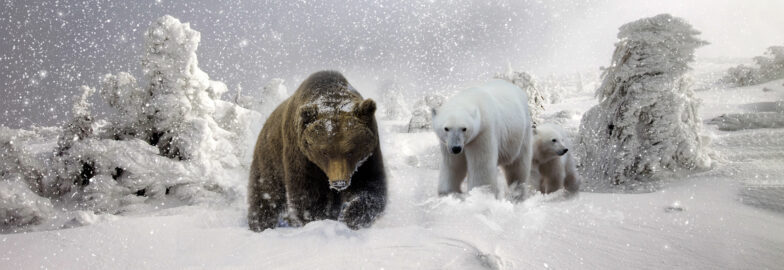Earliest Complex Vegetation and the Bible’s History of Life
A new discovery reveals that complex vegetation appeared much earlier on Earth than previously thought. This discovery, as I will explain, has profound theological significance. Let me first, however, set the historical stage.
Earth’s first life-forms were prokaryotes. Prokaryotes are Earth’s simplest organisms. They are all single-celled. Their cells lack an interior membrane-enclosed nucleus. Their cells also lack mitochondria and other membrane-enclosed organelles.
Eukaryotes, which arrived later, are much more complex than prokaryotes. Eukaryotes include both single-celled and multicellular organisms. All eukaryotes are organisms whose cells contain a nucleus and other organelles that are enclosed within membranes.
The earliest evidence for prokaryotes’ existence dates back to 3.825 ± 0.006 billion years ago.1 And until two weeks ago, the earliest undisputed evidence for the appearance of eukaryotes dated back to 1.65 billion years ago.2 Eukaryotes akin to modern groups, in the form of red algae, date back to 1.2 billion years ago.3
Now, a team of four paleontologists has announced the discovery of two species (Rafatazmia chitrakootensis and Ramathallus lobatus) of crown-group red algae that date back 1.6 billion years.4 These algae species (see featured image) are complex multicellular life-forms that possess multicellular thalli (photosynthetic shoots or twigs). Sibling cells are separated by a pit connection. Cellulose fibrils (fine fibers) are embedded in an extensive gelatinous matrix. In addition to cellulose fibrils, these algae species possess xylan fibrils, which store both polysaccharides and starches.
This discovery by the four paleontologists means that complex eukaryotes akin to modern groups have a much longer history on Earth than previously thought.5 The discovery sustains the theme of Psalm 104 where God is described as packing Earth with life as broadly as possible, with as much diversity as possible, and with as much abundance as possible. This theme also is briefly expressed in Isaiah 45:18.
The discovery also implies that God was aggressively introducing complex life as early as conditions on Earth would permit. As I explain in Improbable Planet,6 such a creation strategy is essential for making possible the existence of human beings and global human civilization.
Further, the discovery may also shed some additional light on the events of creation days 3 and 5 in Genesis 1. One of the most persistent challenges to the accuracy of the scientific chronology of Genesis 1 is that the fossil record contradicts the Bible’s claim that the first plants on the landmasses (creation day 3) preceded the first animals in the oceans (creation day 5).
As I explained in Navigating Genesis,7 the definitions of the Hebrew words used in creation day 3 (zera, es, and peri) are more generic than “seeds,” “trees,” and “fruits.” Rather, they are three nonexhaustive examples of the much more generic term deshe (vegetation). In this context, I cite research papers based on isotope ratios and small parts of fossils that demonstrate that continental vegetation (mentioned in creation day 3) preceded the first appearance of ocean animals (mentioned in creation day 5) by hundreds of millions of years.
The typical habitats for red algae are the shallow (depths of a few feet or less) marine environments that border continental landmasses. Red algae can thrive above sea level as long they are at least occasionally washed over by ocean waves or are recipients of marine mist. About 5 percent of all known red algae species live in shallow freshwater environments.8 Such environments are continental in that freshwater can only exist on landmasses. Thus, red algae likely qualify as the first known complex continental vegetation. As such, the events of creation day 3 apparently precede those of creation day 5 by about 1 billion years.
Red algae are still abundant on Earth today and contribute significantly to human civilization. They are rich in protein, nutrients, and vitamins and serve as an important food source in Britain, Japan, Korea, and Southeast Asia. The gelatins and agar from red algae have industrial applications. For many reasons, we can thank God for red algae and for creating it as early as he did.
Featured image credit: Toby Hudson
Endnotes
- Craig Manning, Stephen Mojzsis, and T. Mark Harrison, “Geology, Age, and Origin of Supracrustal Rocks at Akilia, West Greenland,” American Journal of Science 306 (May 2006): 303–66, doi:10.2475/05.2006.02; Kevin McKeegan, Anatoliy Kudryavtsev, and J. William Schopf, “Raman and Ion Microscopic Imagery of Graphitic Inclusions in Apatite from Older than 3830 Ma Akilia Supracrustal Rocks, West Greenland,” Geology 35 (July 2007): 591–94, doi:10.1130/G23465A.1; Hugh Ross, Improbable Planet: How Earth Became Humanity’s Home (Grand Rapids: Baker, 2016), 98–106.
- Andrew H. Knoll et al., “Eukaryotic Organisms in Proterozoic Oceans,” Philosophical Transactions of the Royal Society B 361 (June 2006): 1023–38, doi:10.1098/rstb.2006.1843.
- Nicholas Butterfield, “Bangiomorpha pubescens n. gen., n. sp.: Implications for the Evolution of Sex, Multicellularity, and the Mesoproterozoic/Neoproterozoic Radiation of Eukaryotes,” Paleobiology 26 (September 2000): 386–404, doi:10.1666/0094-8373(2000)026<0386:BPNGNS>2.0.CO;2; Eun Chan Yang et al., “Divergence Time Estimates and the Evolution of Major Lineages in the Florideophyte Red Algae,” Scientific Reports 6 (February 2016): id. 21361, doi:10.1038/srep21361.
- Stefan Bengtson et al., “Three-Dimensional Preservation of Cellular and Subcellular Structures Suggests 1.6 Billion-Year-Old Crown-Group Red Algae,” PLoS Biology 15 (March 2017): e2000735, doi:10.1371/journal.pbio.2000735.
- Robert G. Sheath, “The Biology of Freshwater Red Algae,” Progress in Phycological Research 3 (1984): 89–157.
- Ross, Improbable Planet, 94–219.
- Hugh Ross, Navigating Genesis: A Scientist’s Journey through Genesis 1–11 (Covina, CA: RTB Press, 2014): 49–52.
- Sheath, “Biology of Freshwater Red Algae.”






